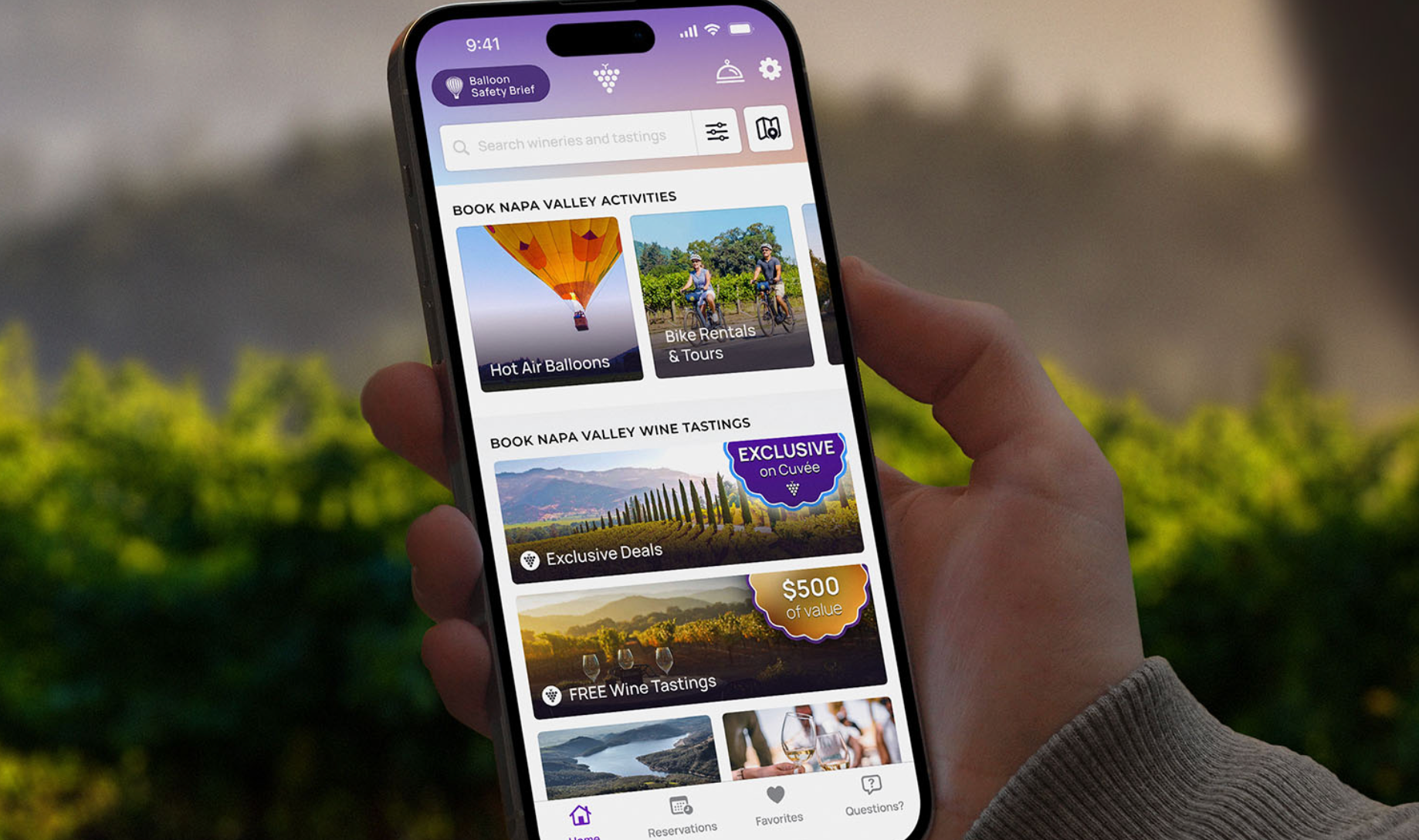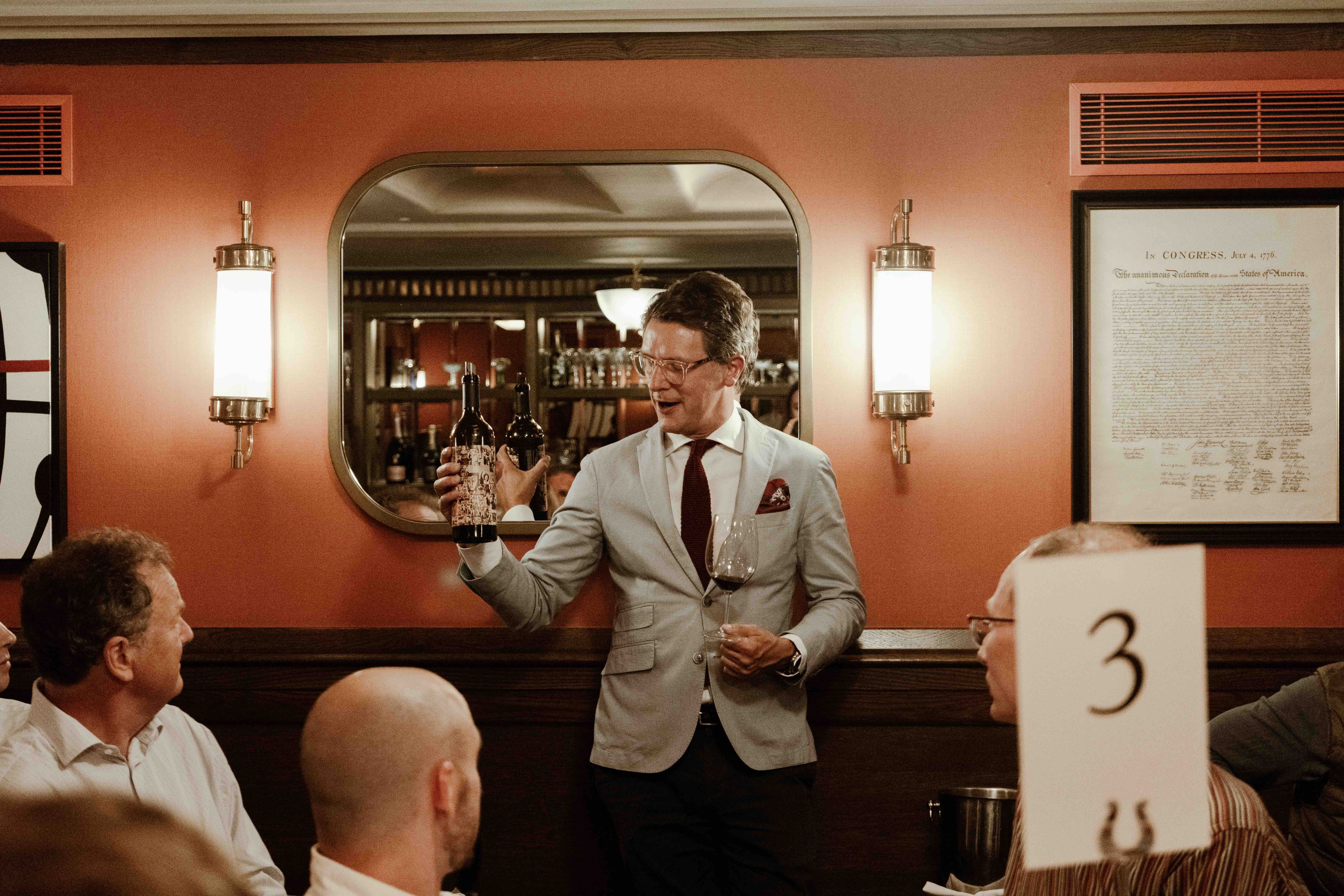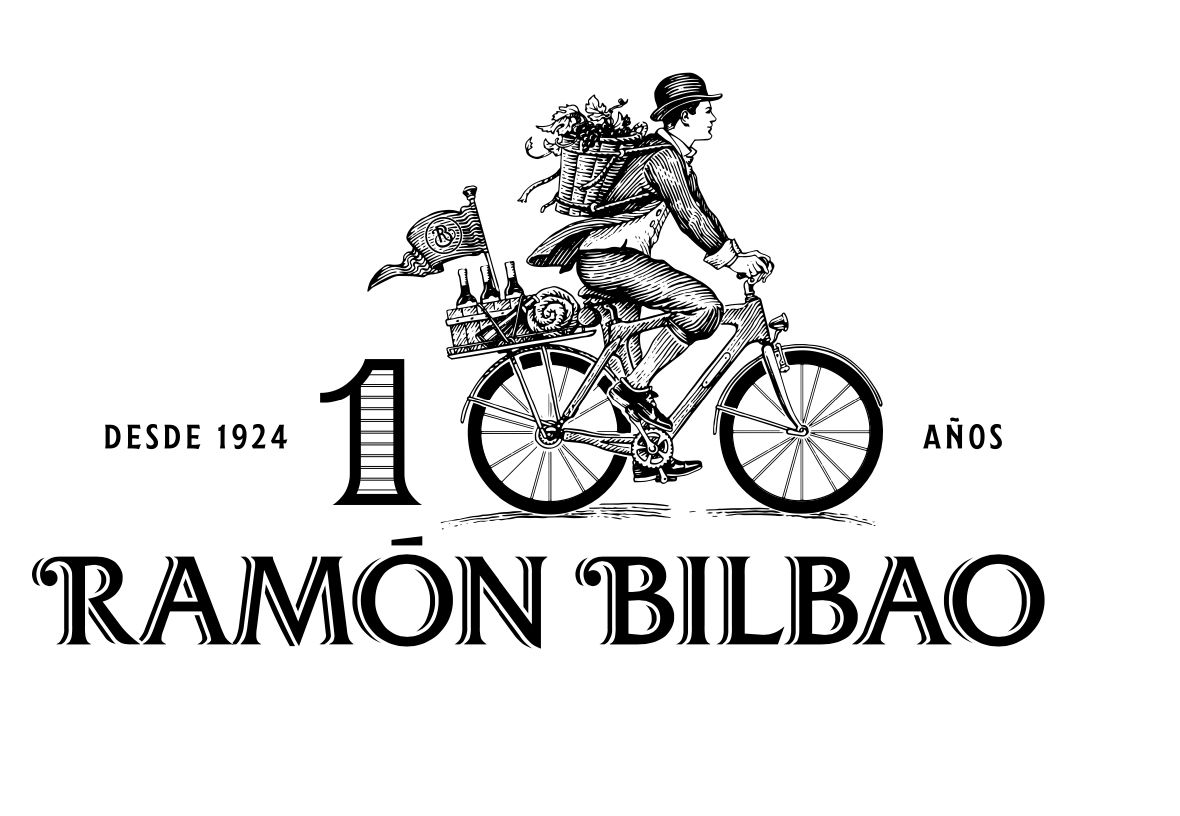One of the biggest impacts Covid-19 has had on the drinks and hospitality sectors is how fast it has forced businesses to look at a digital first strategy. The Buyer’s Digital Hub hopes to share ideas and insights from those who know how to do digital the best.
(You can get on top of the major changes in consumer behaviour and the drive towards digital during Covid-19 in the free One Step Beyond webinar being hosted by The Buyer and Sophie Jump on October 20 with all the speakers reunited online from the breakthrough event in March. Register to watch here).
What’s the right kind of technology for hospitality?
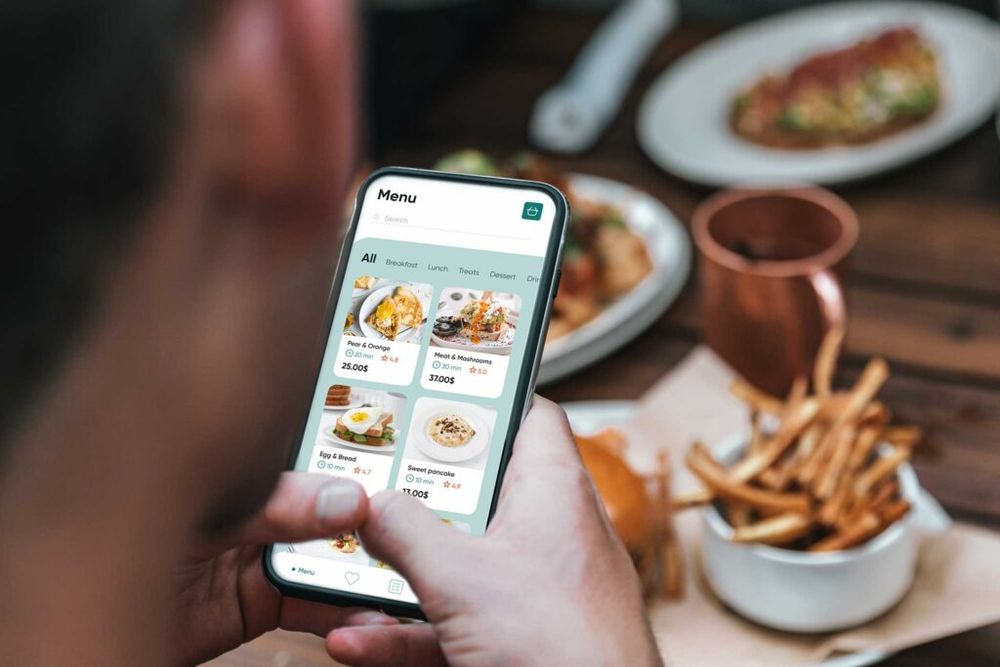
It’s now not possible to offer food and drink in a pub or restaurant without using smart technology and apps
It’s clear there is a big demand from customers to be able to take advantage of new technologies when out eating and drinking, but the ones that will work the best don’t start with the tech itself – but the customer.
That’s one of the key conclusions of a new white paper – Technology Enhanced Customer Experience – published by KAM Media, the hospitality insights business and Order Pay, the online payments app.
As it is being published in the middle of pandemic much of the new technology covered is being introduced, and asked for by customers, revolves around safety, health and hygiene:
- 92% of people want to see clear Covid-19 safety information on a restaurant or pub’s app or website.
- 37% will use apps to find out how busy a venue is when.
- 29% will use apps and websites to find out the cleaning schedule.
Hardly the sort of Bionic Man-style innovations we might have been craving before lockdown.
But what Covid-19 has done is transform the way we now expect to behave when out eating and drinking, expectations that are likely to stay long after the pandemic, says the report.

- The biggest change has been our acceptance of contactless payment – 90% expect to see it offered by the bar or restaurant they are visiting.
- In fact a separate study by Ubamarket shows have not used cash at all since lockdown, 50% of people in Britain haven’t used cash at all since the start of lockdown and have relied exclusively on card and contactless payments. Also 43% of Brits (over 20 million) want their shopping experience moving forward to require as little human interaction as possible
- 74% of people now expect to be able to book a time slot in advance.
Before Covid-19 a key challenge for any restaurant or bar was to find ways in which they could increase the number of times they can talk to and engage with their customer during a visit. Now it is the opposite. Technology is allowing us to keep our distance.
But ultimately customers want a relaxed and smooth experience when they go out, so any new technology needs to make sure it does not get in the way of that.
Could do better
The report also warns the hospitality sector that it collectively needs to better and cites 50% customers who think pubs and restaurants are behind other leisure outlets and retail in the technology they are using.
The contactless and app payment opportunity, for example, was there well before Covid-19 – particularly popular amongst 18-34 year-olds (43% had used contactless apps before March). Key areas that hospitality players should look at from the report are:
- 65% of customers would now like to buy a digital gift card that they could use but also send via a smartphone to friends and family.
- 50% would like to get a push voucher offering a discount when walking past a venue.
- 88% of people are now influenced by loyalty schemes in deciding where they to go eat out.
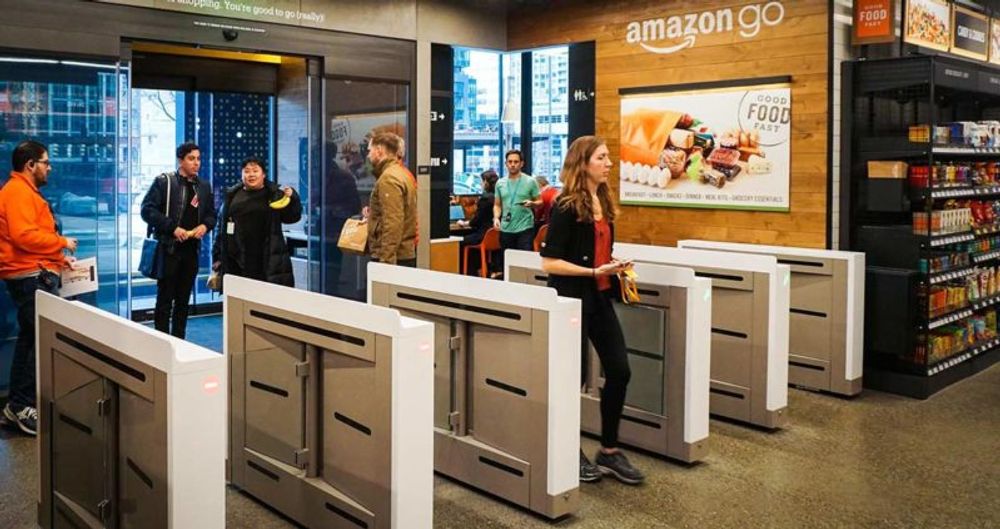
The majority of younger customers would like to see Amazon Go-style tech offered in pubs and restaurants so they can order, drink, eat and go.
- 77% of 18-34 year-olds would like venues to have Amazon Go style technology so they could register their payment information and then walk out whenever they wanted. Overall 57% of men and 44% of women would like to do the same.
- 70% would like outlets to offer an online loyalty card and give out loyalty points every time they visited.
- 22% of 18-34 year olds used a digital gift card in a pub or restaurant during Covid.
- 66% of 18-34 year old would like to order food and drink before arriving at the venue.
The study also shows how quickly and effectively so many venues have switched to delivery during Covid-19 – 45% of venues started up some sort of delivery and 80% are continuing to run it post-lockdown.
Of those customers that have used these delivery services 76% have bought cooked food, 54% alcohol and 29% groceries.
And another thing
The report also shares the thoughts of key players in hospitality about what they are looking for from technology.
- Russ Danks, marketing and strategy director at Punch Pubs says: Technology can only be useful if it makes our everyday that little bit easier…unless technology can can change long term behaviour, it very rarely sticks…its not about the tech, but the outputs it provides.”
- Ben Lockwood, marketing manager for on-trade from Brewdog, says: “Now is the time to understand where technology can help take some operational pain so that we can focus on the customer exprience.”
- Blake Gladman, strategic and insight director at KAM Media, adds: “Technology is best when it can do two simple things: improve the customer experience; and deliver rich [customer] data that can help businesses measure and improve their products and services.” For him it is using technology as “the conduit” that allows operators to provide a better hospitality experience.
What you need to know about Amazon’s new Luxury Stores initiative

High end fashion brand Oscar de la Renta is the first luxury brand to tie in with Amazon
Brand managers for the world’s most expensive luxury brands probably have not spent too much of their working lives up to now worrying about the analytics of what Amazon is up to online.
Now they will. For last month Amazon announced it was moving into luxury retail for the first with with its new ‘Luxury Stores’ concept that it hopes will see many of the world’s most exclusive brands take out their own exclusive stores on Amazon.
It’s something that has already worked for Alibaba – China’s equally all powerful and influential retail site – and the luxury platform on its Tmall site.
Amazon’s Luxury Stores is actually currently just one – and an exclusive online store for fashion brand Oscar de La Renta. To create an aura of exclusivity the Oscar de La Renta site via Amazon is invite only to certain Amazon Prime customers.
But if Amazon can get luxury retailing right with all its algorithms and “we know what you want” one click, next day ordering capability it could transform the high end retail sector.
For one thing luxury brands claim like no other is that they truly know and understand their customers. Just what kind of watch, hand bag or accessory is worth them parting with thousands of pounds for?
To do that well you need years of customer data and analysis, gleaned from countless luxury events, and promotions each telling the luxury brand in question just a little bit more about how their target customer thinks and acts.
It is going to take even Amazon some time to come even close to having access to that kind of data. But Oscar de La Renta is no doubt hoping to tap into’s Amazon’s pulling power that saw it sell over a billion fashion items over the last year.
(Amazon and Oscar de la Renta collaborated on a launch video, starring Cara Delevingne, directed by Bunny Kinney)
How prepared is Amazon going to be to share the level of data that luxury brands are used to having compared to what it normally does with its traditional brand partners? That’s the balancing act that Amazon is going to have to play and get right in the weeks ahead.
Particularly as it thought the luxury brands that work with Amazon will create a ‘store within a store’ on their site, where they are in charge of inventory and pricing decisions and Amazon provides them with the “technology to build an inspiring, elevated customer experience”.
Will it be willing to use traditional marketing tactics such as targeted mailer campaigns to existing customers? Not an area that Amazon has ever done before.
It would need a radical rethink and relaunch of its Marketplace model if it is to rely on any luxury brand using third parties to sell its products. It was one of the big issues that saw Nike run away from the platform.
It is, though, only following where Alibaba and its Tmall luxury online retail platform has gone before, bringing luxury to the well heeled across China.
“Amazon absolutely could change luxury retailing. It’s just not immediately clear how that would be or, more importantly, whether the luxury consumer would want it to,” says Mudit Jaju, global head of e-commerce at ad agency, Wavemaker, told Modern Retail. “The way that Amazon would crack this is by identifying what consumers find dissatisfying about the current luxury purchase experience. I’m not certain that listing the Oscar de la Renta collection on an Amazon subdomain is quite the solution.”
How Instagram is expanding its shopping platform
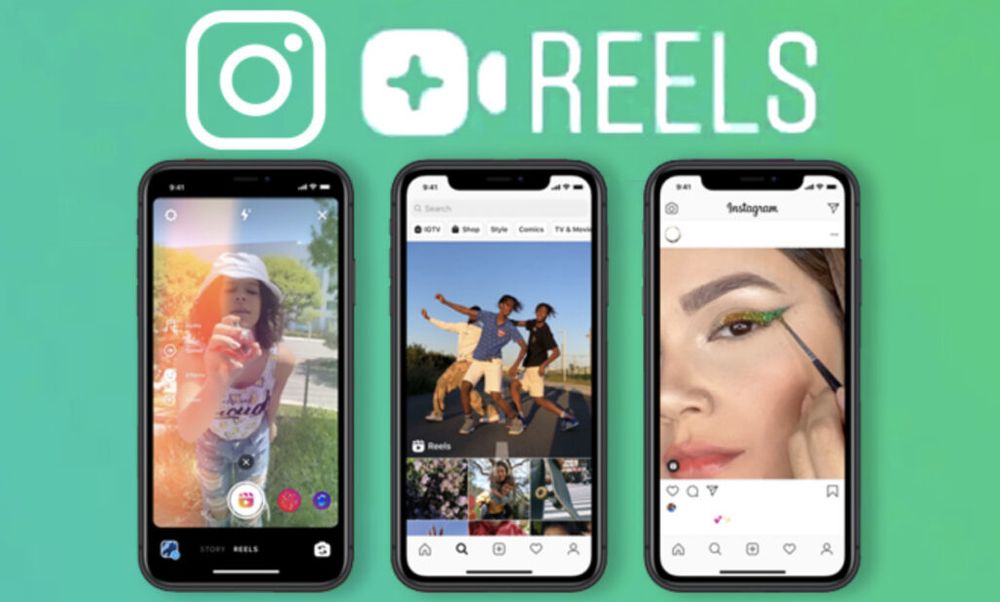
Reels on Instagram now allows users to sell through the format
The concept of using social media to actually click and buy products is still relatively new even though all the major platforms have been testing and trialling to see what works.
Instagram, for example, has allowed brands and users to buy and sell through its Live and Stories feeds since March 2019, and then its Explore function since July. It is now looking to extend shopping to its new Reels features later in the year and to IGTV as of next week – when it will also be possible to post longer videos.
Reels was only introduced in August and has been launched in direct competition to TikTok in that it allows users to post up 15 second videos. Introducing a shopping tag to Reels will allow it to go head to head with TikTok as it also introduced a ‘Shop Now’ function earlier in the year.
The move by Instagram to allow users to shop through IGTV is a potential breakthrough to the 100s of winemakers and drinks producers who have taken to IGTV throughout Covid-19 to host tasting and talks. Up to now they could only show their products to their captive audience, but now they will have the option of allowing them to buy their products there and then.
Shopping via social media and live streams has already been a major success in China and said to be worth $63 billion in 2019.
Welcome to Walmart’s new omni-shopping experience

Walmart has unveiled its digital first new store concept this month
Walmart’s announcement this week that it was “reimagining” the shopping experience sounded more like a press statement from Disney: “Today, our imagination becomes a reality as we unveil a completely new look and feel focusing on a digitally enabled shopping experience,” is how it introduced what is, in fairness, a radical new look and feel for a major supermarket chain.
The fact Walmart also happens to be the world’s biggest grocery chain makes its new digital first store concept even more significant.
Essentially it has ‘reimagined’ its store design by analysing how its customers want to shop and then layering within that how it can connect its app and digital offer to enhance the overall shopping experience.
All shoppers are asked to “Shop with the app” and use it as a customer service tool as they travel around the store.
So if you can’t find the size of clothes you want in-store, scan the tag of the item you want and see if you can get a bigger size by shopping through the app. There and then. The bakery section allows you to use your app to create your own cake by choosing the toppings and then picking it up at the end of your shop.
The new look is clearly in response to the arrival of the Amazon Go stores that allow its shoppers to buy using its app and simply walk out with all payments handled electronically. Walmart’s new Scan & Go tech allows you to do the same but scan your own items first.
It’s even borrowed from airport designs to find the best way to move large numbers of people through the store as quickly but as effectively as possible, with airport-style information boards dotted around the store to help people find the aisle and goods they want.
The new look store is going to be rolled out to 1,000 by the end of 2021.




